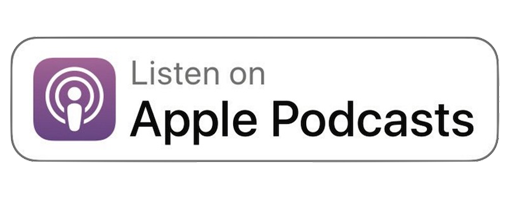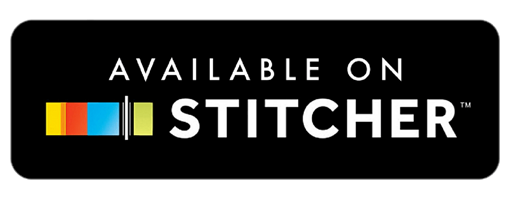What is the TOEFL Test?
And How to Get Your Dream Score
This post is a part of the English with Andrea podcast, so you can follow along with the content in one of two ways…
Listen to Andrea
What is the TOEFL & how to get your best score
Watch Andrea
Now, onto the lesson…
When you hear the acronym TOEFL®, what exactly do you think of? You might become filled with anxiety over the test you know you have to do well on in order to attend the university of your dreams. You might get excited that you’re finally ready to take this test to prove your English skills. You might even feel confused because you don’t know what to expect. My goal is to answer all of your questions so you feel confident to get a great score on the test.
What is the TOEFL® test?
TOEFL® is an acronym for defining the Test of English as a Foreign Language (TOEFL®). It is one of the leading English-language tests for university study, work and immigration. The purpose of the exam is to provide a means of assessment to measure an individual’s ability to speak and understand the English language. Due to the academic focus, it is a test of great prominence for international students who need to prove their proficiency, being requested especially for universities that have English as their first language. In addition, institutions such as government agencies, companies and study programs can also use TOEFL® to test candidates’ proficiency.
Why take the TOEFL?
The TOEFL iBT® helps you to prove your knowledge of the English language through listening, pronunciation, writing, and speaking.
The exam is divided into three categories:
For Test Takers: In this modality, the TOEFL iBT® is applied to measure academic English skills, with the aim of demonstrating to universities that you are ready for success. The test has 4 sections – Reading, Listening, Speaking, and Writing and tasks are performed that combine these four skills.
For Score Users: This is a modality that offers certification to companies whose candidates have proficiency in English.
For Teachers, Advisors, and Agents: It is a modality applied by teachers to their students in order to measure their proficiency in the English language.
Does this test have an expiration date?
Yes! The TOEFL® score is valid for two years, after which it is deleted from the database. It is important to understand that the validity of this exam has the logic that a candidate’s ability in the English language can vary widely within the two-year period, so the test does not have lifetime validity.
TOEFL and ETS are synonymous terms?
No. TOEFL® is a registered trademark of Educational Testing Service (ETS).
What’s the history of the TOEFL test?
The first TOEFL® test was carried out in 1964 and, since then, about 20 million students have taken it. Now, TOEFL® is accepted by more than 11,000 universities in over 150 countries, including Australia, Canada, New Zealand, the United States, the United Kingdom and throughout Europe and Asia.
What is the TOEFL iBT® Special Home Edition?
The TOEFL iBT® (Internet Based Test) is a new way of applying the exam on the internet, in which the test can be taken at home. Is an option for students who are unable to take the TOEFL iBT® test at a test center due to public health concerns. The novelty of the computer TOEFL iBT® test is the only test that measures all four academic English skills – reading, listening, speaking and writing – the way they are actually used in the classroom, providing real results in the teaching-learning aspect .
What is the format of the TOEFL® test?
Now that you know more about the test, the expiration date, and the purpose, let’s understand the format of this test.
The TOEFL iBT® format consists of four sections: Reading, Listening, Speaking and Writing. During the test, tasks will be performed that combine these four communication skills in English, measuring, for example, the ability to read and answer a question or to hear and answer a question. The test takes about 3 hours to complete, but you must reserve 3½ hours. In the face-to-face test, it is also necessary to set aside time to travel to the test location. The test must be completed in one setting.
What’s in the Reading section of the TOEFL® test?
The Reading section of the TOEFL iBT® measures the ability to read and understand through the use of materials used in the academic environment. It consists of 3 or 4 reading passages, each consisting of approximately 700 words, with 10 questions per passage. The duration of this activity varies from 54 to 72 minutes to answer all questions.
The texts are extracted from university-level textbooks. The subjects vary a lot, so it’s important that you read on different topics when you are preparing. It is important to mention that even if you are not completely familiar with the context, all the information necessary to answer the questions will be displayed in the text, making it unnecessary to infer any content from background knowledge. In some cases, a glossary will also be made available to define words not commonly used.
What’s in the Listening section of the TOEFL® test?
The TOEFL iBT® Listening section assesses the ability to understand conversations or lectures in English. In this section, basic comprehension skills are also measured, even in relation to intonation and defined contexts such as pragmatic understanding (speaker’s attitude and degree of certainty) and connection and synthesis of information.
In this section, two items are evaluated: lectures and conversations. The structure is as follows: 3–4 lectures, each 3–5 minutes long, with 6 questions per lecture 2–3 conversations with 2 speakers, each 3 minutes long, with 5 questions per conversation. You are allowed to take notes on any audio item during the test that helps answer the questions. The time available is 41 to 57 minutes to complete the section.
What’s in the Speaking section of the TOEFL® test?
The TOEFL iBT® conversation section measures the ability to speak English effectively in academic settings. The section consists of 4 tasks related to concepts inside and outside the classroom. Question 1 is called the “task of speaking independently”. It works on the candidate’s ability to rely entirely on his or her own ideas, opinions, and experiences to answer questions. Questions 2 to 4 are called “integrated speech tasks”. They work on combining English skills – listening and speaking, or listening, reading, and speaking.
The candidate has 15 to 30 seconds of preparation time before each answer and will have 45 or 60 seconds to give an effective answer. The total time to complete this section is 17 minutes. The answer will be given using the headset microphone. Responses are recorded and sent to ETS, where they will be scored by a combination of AI scores and certified human evaluators.
What’s in the Writing section of the TOEFL® test?
The TOEFL iBT® writing section measures the ability to write in English within the academic environment, with the aim of presenting ideas in a clear and organized manner.
There are 2 writing tasks:
- Integrated writing task: You will read a short passage and listen to a short lecture, then write about what you read and hear in response. The time for this task is 20 minutes.
- Independent writing task: You must write an essay based on your experience or personal opinion in response to a written topic. The time for this task is 30 minutes. Answers must be typed using the computer keyboard. Responses are sent to ETS, where they are scored by a combination of AI scoring and certified human assessors. The total time to complete the writing is 50 minutes.
What Tools Can I Use to Get a Great Score on the TOEFL?
Getting your ideal score on the TOEFL test is going to take a lot of hard work and the right study tools. That’s why I have created the ultimate TOEFL Reading Test Prep pack. In that pack, I teach you hundreds of TOEFL words that score 100+. The TOEFL Reading Test Prep pack includes a video-based course, an audio pack, and a downloadable PDF. I want to help you get your dream score! Let’s do this together.
Download the Ultimate TOEFL Reading Test Prep Pack at StudyWithAndrea.com/TOEFL.
Until next time, Happy learning!
Click on one of the following links to start speaking clearer English!
1) TOEFL MASTER CLASS
2) free mini-course “punctuation mistakes to avoid”
3) Clear English Pronunciation Video Course
4) English Vocabulary – Audio Files & PDF – TOEFL & IELTS

Jhessika Nascimento
Director of International Partnerships
Jhessika Nascimento is a bilingual teacher of English and Portuguese, with degrees in Portuguese and English letters and Teaching in Higher Education. Jhessika is the Director of International Partnerships for Study With Andrea and lives in Brasilia, Brazil.
The following is a TOEFL Reading practice test to help you prepare for the Reading section of the TOEFL test.
Instructions: Read the sample passage below and then answer the questions that follow.
TOEFL Reading Practice Passage
Gorillas are ground-dwelling, predominantly herbivorous apes that inhabit the forest of central Sub-Saharan Africa. The genus Gorilla is divided into two species: the eastern gorillas and the western gorillas (both critically endangered), and either four or five subspecies. They are the largest living primates. The DNA of gorillas is highly similar to that of humans, from 95 to 99% depending on what is included, and they are the next closest living relatives to humans after the chimpanzees and bonobos.
Gorillas' natural habitats cover tropical or subtropical forest in Sub-Saharan Africa. Although their range covers a small percentage of Sub-Saharan Africa, gorillas cover a wide range of elevations. The mountain gorilla inhabits the Albertine Rift montane cloud forests of the Virunga Volcanoes, ranging in altitude from 2,200 to 4,300 metres (7,200 to 14,100 ft). Lowland gorillas live in dense forests and lowland swamps and marshes as low as sea level, with western lowland gorillas living in Central West African countries and eastern lowland gorillas living in the Democratic Republic of the Congo near its border with Rwanda.
(#1) Gorillas move around by knuckle-walking, although they sometimes walk upright for short distances, typically while carrying food or in defensive situations. (#2) A 2018 study investigating the hand posture of 77 mountain gorillas at Bwindi Impenetrable National Park (8% of the population) found that knuckle walking was done only 60% of the time, and they also supported their weight on their fists, the backs of their hands/feet, and on their palms/soles (with the digits flexed). (#3) Studies of gorilla handedness have yielded varying results, with some arguing for no preference for either hand, and others right-hand dominance for the general population. (#4)
The eastern gorilla is more darkly colored than the western gorilla, with the mountain gorilla being the darkest of all. The mountain gorilla also has the thickest hair. The western lowland gorilla can be brown or grayish with a reddish forehead. In addition, gorillas that live in lowland forest are more slender and agile than the more bulky mountain gorillas. The eastern gorilla also has a longer face and broader chest than the western gorilla. Like humans, gorillas have individual fingerprints. Their eye color is dark brown, framed by a black ring around the iris. Gorilla facial structure is described as mandibular prognathism, that is, the mandible protrudes farther out than the maxilla. Adult males also have a prominent sagittal crest.
A gorilla's lifespan is normally between 35 and 40 years, although zoo gorillas may live for 50 years or more. Colo, a female western gorilla at the Columbus Zoo and Aquarium, was the oldest known gorilla at 60 years of age when she died on 17 January 2017.
Questions
1. According to the passage, gorillas can live in
a. a variety of altitudes.
b. several different countries in Africa.
c. thick forests.
d. lowland forests only.
2. All of the following is true about gorillas EXCEPT
a. they primarily eat smaller animals.
b. they live in a forest habitat.
c. their genetics are similar to humans.
d. their diet consists of vegetation.
3. Look at the word predominantly in paragraph 1. The word predominantly in this passage refers to
a. impulsively
b. unfortunately
c. mainly
d. lastly
4. Look at the word inhabits in paragraph 2. The word inhabits in this passage refers to
a. lives in
b. protects
c. goes
d. works
5. The author implies that
a. most gorillas prefer using their left hand over their right.
b. gorillas rarely walk on their knuckles.
c. gorillas regularly walk upright for long distances.
d. studies haven't solidly proven which hand gorillas prefer using.
6. Why does the writer mention that the eastern gorilla also has a longer face and broader chest than the western gorilla?
a. To validate the importance a broad chest in western gorillas
b. To define the meaning of "broad"
c. To highlight a physical difference between types of gorillas
d. To demonstrate that most gorillas are identical in physical build
7. Which of the following statements is true for BOTH eastern and western gorillas.
a. Both eastern and western gorrilas are brown with red foreheads.
b. Both eastern and western gorrilas have unique fingerprints.
c. Both eastern and western gorrilas have thin hair.
d. Both eastern and western gorrilas have light brown eyes.
8. In Paragraph 3, look at the four numbers (#1, #2, #3, #4) that indicate where the following sentence would be added to the passage.
Such a range of hand postures was previously thought to have been used by only orangutans.
Where would the sentence best fit?
(View all the correct answers below.)
Great job! If you're ready to take your TOEFL preparation to the next level, go to StudyWithAndrea.com/TOEFL.
Answers: 1. d 2. a 3. c 4. a 5. d 6. c 7. b 8. #3
Click on one of the following links to start speaking clearer English!
1) TOEFL MASTER CLASS
2) free mini-course "punctuation mistakes to avoid"
3) Clear English Pronunciation Video Course
4) English Vocabulary - Audio Files & PDF - TOEFL & IELTS
About Andrea
Andrea Giordano is the founder of StudyWithAndrea.com and has taught more than 1,000,000 students from 180 countries. Andrea holds a Master of Education (TESOL) from Shenandoah University, and is the former Executive Director of TESOL and ESL programs at Campbellsville University. Andrea is a proven leader in online English teaching and is driven by her passion to help you speak English clearly.





